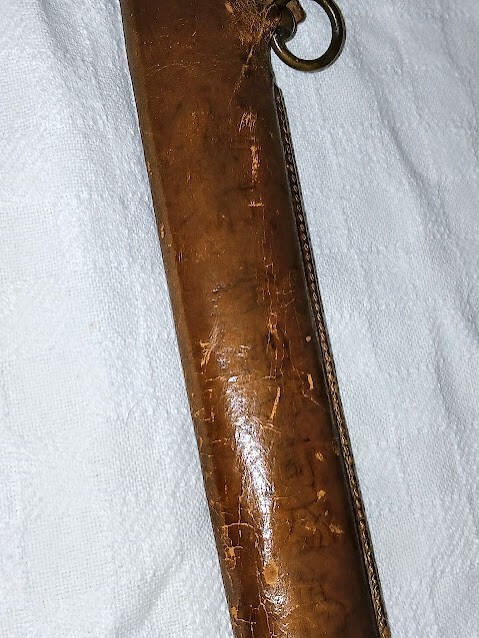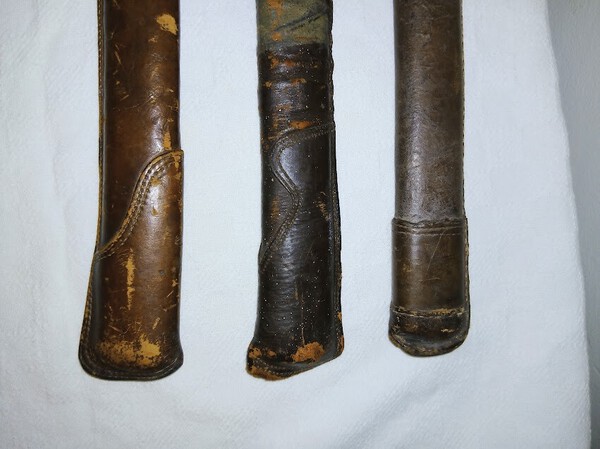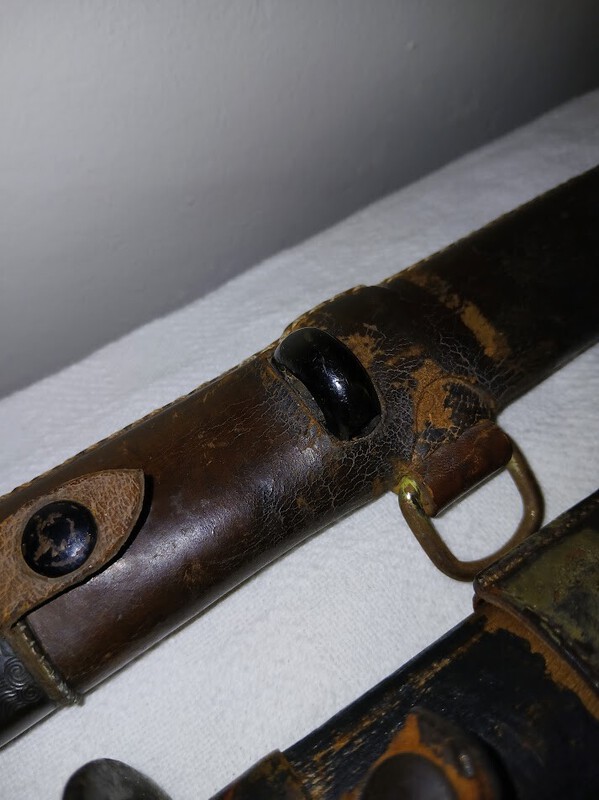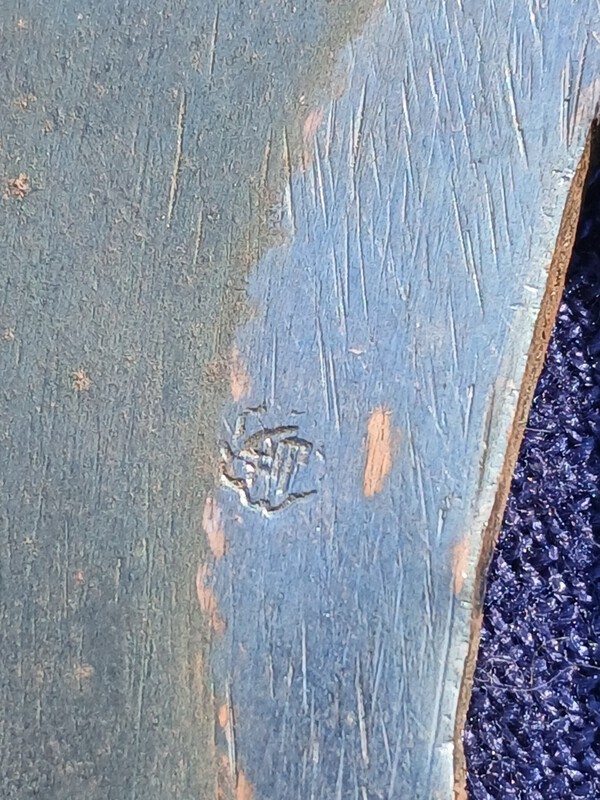-
Posts
83 -
Joined
-
Last visited
About Joseph P.

Profile Information
-
Gender
Male
-
Location:
San Diego, California
-
Interests
Many
Profile Fields
-
Name
Joseph
Recent Profile Visitors
596 profile views
Joseph P.'s Achievements
-
Hello Gerry, I have seen a few of these wrapped saya recently. I don't think any of them were in type 98 fittings though. Hopefully someone can provide some more information.
-

Reproduction? I have not seen a Yasurime like this
Joseph P. replied to Jon D's topic in Fake Japanese Swords
Yes, this is likely a chinese fake. The kanji look bad, the yasurime looks bad as you pointed out. The nakago is not finished properly, does not have any patina either. The number one telltale sign for me though, is the presence of the typical chinese "damascus" running throughout the tang. -
Hey Forest, I am not fluent in Japanese (yet). I have been studying for several months. I learned Hiragana and Katakana in one or two months give or take, it was really fast and easy. Basically I practiced writing the entire Hiragana/Katakana alphabet over and over again, and used what I wrote as a chart to study. If you watch Japanese TV shows or read manga, any Japanese interest really, you can practice writing words in hiragana and katakana using the chart as a reference (like katana, wakizashi, anime characters, Japanese actors, etc). You will memorize the characters pretty quickly. Kanji is where it gets challenging, it may be easier to learn the spoken language than to learn kanji. As for the spoken language, I have learned some but not really a whole lot. It's actually less difficult than it seems. It can take years to properly learn spoken Japanese and kanji, in my opinion. Usable Japanese though? Not really that difficult to learn.
-
I would classify it as a late war sword, having been made in the last year of the war. It is decent quality and looks to be in good shape. The mounts are called Rinji Seishiki, but they've been known by many different names over the years (such as Type 3 or 44). Someone may be able to chime in with more information on this particular smith. The blade is stamped which indicates this sword was not produced in a traditional manner, or it involved some sort of non-traditional component. This is typical for many gunto, early and late war. Edit: After searching, this may be the guy we are looking for but I am not 100% sure on this.
-
Hello Chansen, From what I can tell, Nobumitsu (信光) seems to be accurate. It is also signed "Showa 20", or 1945. First month (January).
-
Joseph P. changed their profile photo
-
Bruce posted this above: "Wartime sword that likely had a damaged tsuka (handle). Someone along the way crafted a new wooden handle, but kept the Army kabutogane (end cap)." So the wood handle is not original, but whoever made it kept the kabutogane (the brass end cap) and put it on the new handle. The flower was a personal touch by whoever made it, no Japanese tradition or anything associated with it. This is more what it would have looked like originally. A Type 98 Gunto.
-
Hello Jon, Welcome to the forum. I believe the sword is dated "August, 1943". The shorter signature with only two characters should be the name of the smith. Please wait for this to be confirmed and for further translation, as I am still learning.
-
It's a nice tsuba Chris. Brings to mind something else more prevalent in the firearm community, called "blood pitting". Blood contains salt (?) which if left unchecked, can lead to rapid rust and decay. It is possible the tsuba had been grabbed by a bloody hand, or maybe laid on the ground for a while after a battle and was picked up and simply wiped off. Of course this is all just speculation.
-
Here are mine. I have a few more photos in my Google Album, be warned though the photos aren't that good. Also the one with most of the cover missing (third one down) is canvas. https://photos.app.goo.gl/wzz8yGffcZ1FUp4V9 It's not uncommon to find a cover with the soldier's name or a patriotic slogan written on it. One with a kurikata and hanger. Variations of the scabbard "drag".
-
Hello Olga, First off, welcome to the forum. This probably should have been posted in the "Nihonto" section, but the admins will move it when they get to it. Having more pictures is necessary, but from the single photo provided it appears to be a genuine Japanese sword. It is reminiscent of a World War 2 era sword, these may be non-standard fittings (Gunzoku), as the menuki under the handle wrap appears to be from an army gunto. Though usually the saya will not have sageo for World war 2 era swords. Please wait for the experts to chime in as they will be able to provide a translation and more information. Also please post a few more photos if possible, especially of the blade itself.
-
Thank you all for the assistance. Very helpful for learning some of these kanji.
-
Thanks so much Bruce. I made an attempt at translating the date but I was off, getting better though. I am studying kanji right now and I had trouble with what I assume is the 4 or 44. After you provided the correct translation, the month portion made more sense to me.
-
-
Hello All, I request some assistance with translation and the stamps. I only know it may be signed "Michizane". There appears to be a very small Seki stamp (If I'm seeing it correctly) on one side, then another stamp on the other side which I'm not able to identify. The tsuba is stamped on both sides as well. To my eyes it seems to be the same pattern of Seki on one side and the unknown on the other, except the Seki stamp is much larger on the tsuba. I read a bit about stamps on this website but there is a lot to take in. Apologies in advance for my less than satisfactory photos, here is a link to the google album with a few more photos, assuming the link works. https://photos.app.goo.gl/wBmixFMk4K3tACc29 Thanks
-
The Shin Gunto Kanemoto linked below has a handle that was painted white. I'll post some of the links to whatever information I could gather. https://www.militaria.co.za/nmb/topic/21548-winter-is-coming/ https://www.militaria.co.za/nmb/topic/51654-shin-gunto-kanemoto https://www.militaria.co.za/nmb/topic/26694-greetings-from-az-help-with-a-possible-type-98 This discussion on Japanese snow camo helmets is pretty interesting. https://www.worldmilitariaforum.com/forums/index.php?/topic/315244-Japanese-snow-camo-helmet/ I also found this Type 98 on the SBG website. https://sbg-sword-store.sword-buyers-guide.com/product814.html "Here is a comparison with a genuine type 98 Gunto whose scabbard has faded over the last 7 or 8 decades to a white powdery color:" I'm not holding this sword in my hand of course, but I honestly can't say I've ever seen a scabbard fade to white like that. Surely we would have seen a number of them. I also found a sword for sale on Etsy, a supposed Meiji era saber. It also has remnants of white paint on the grip, though it is a sword from an earlier era. "Meiji Era 1860s-1910s Japanese Type 8 Cavalry Troopers Sword with Scabbard"
























